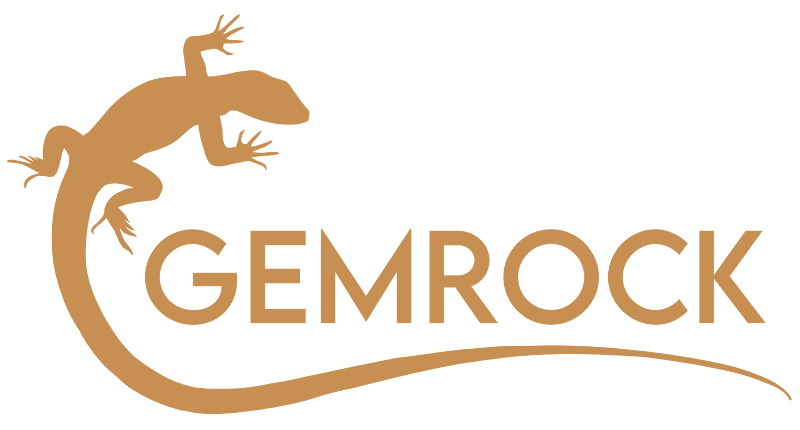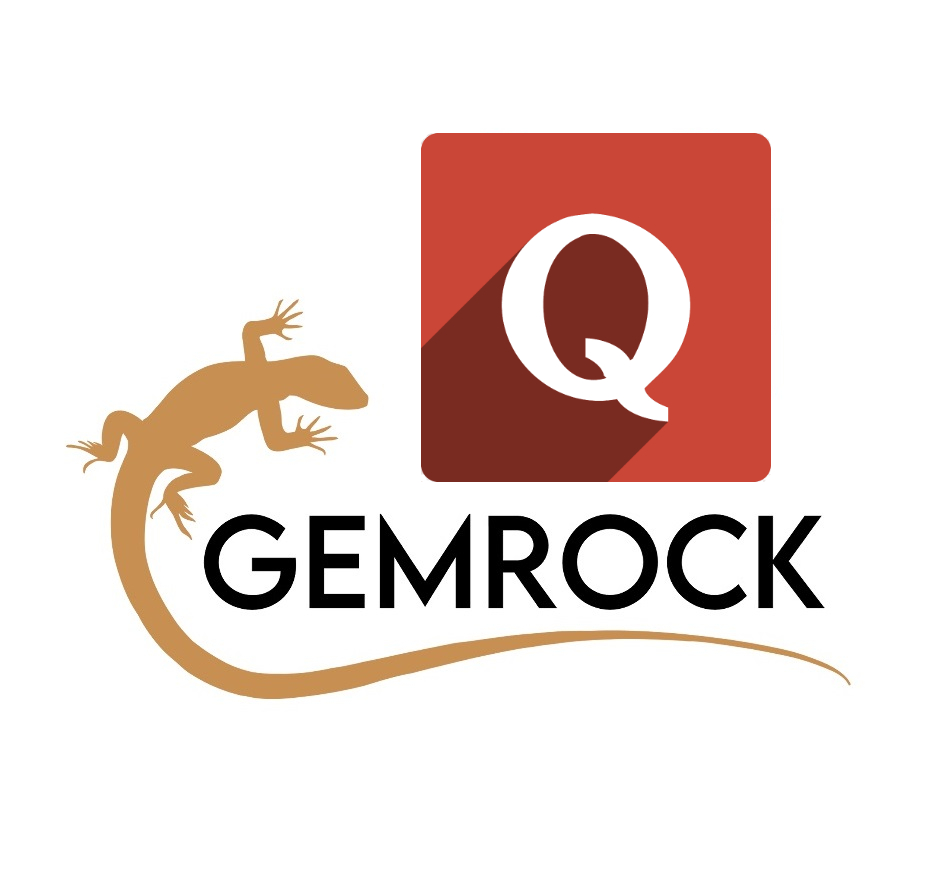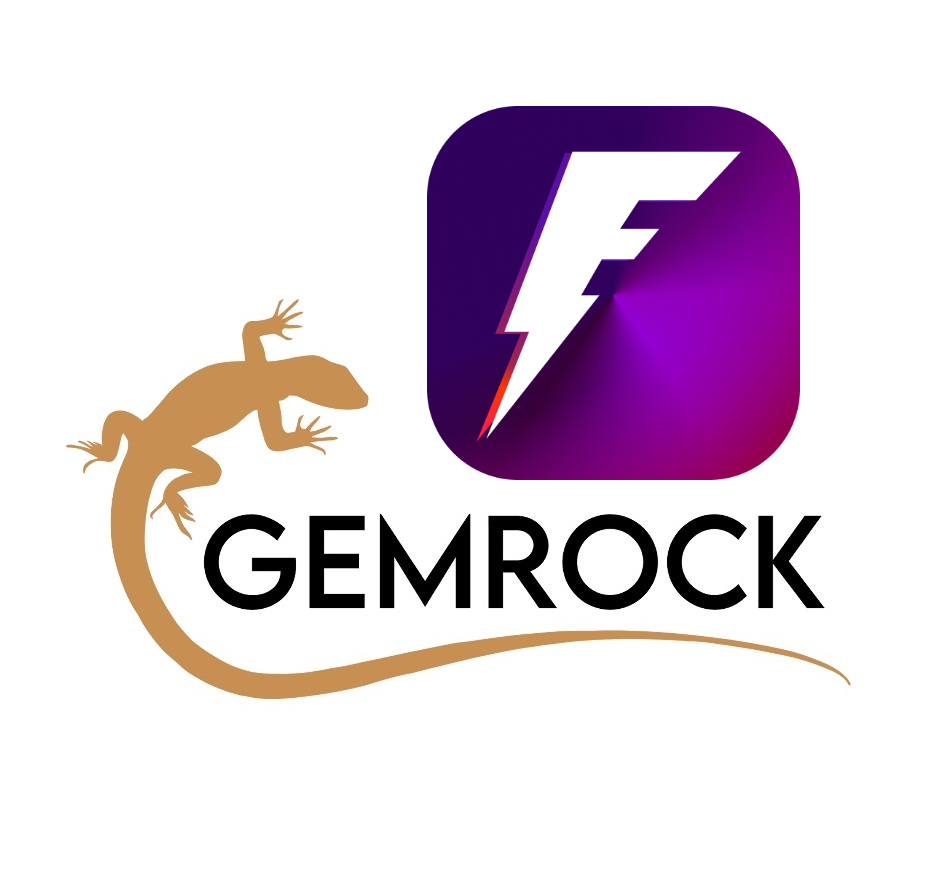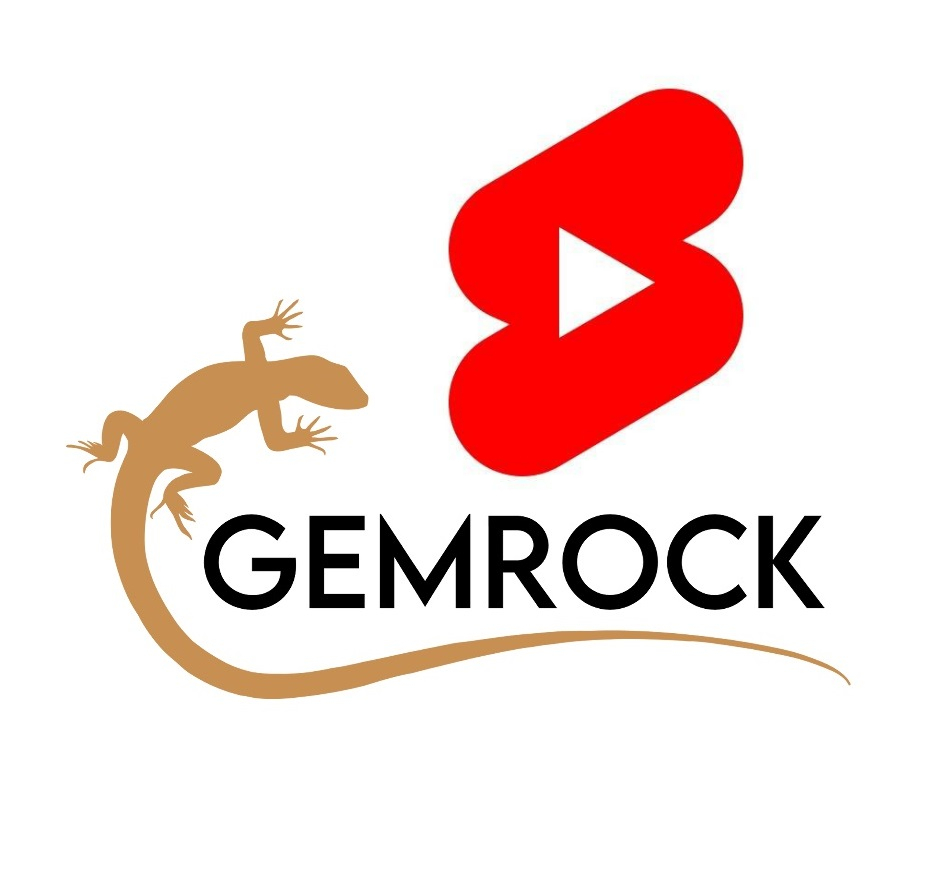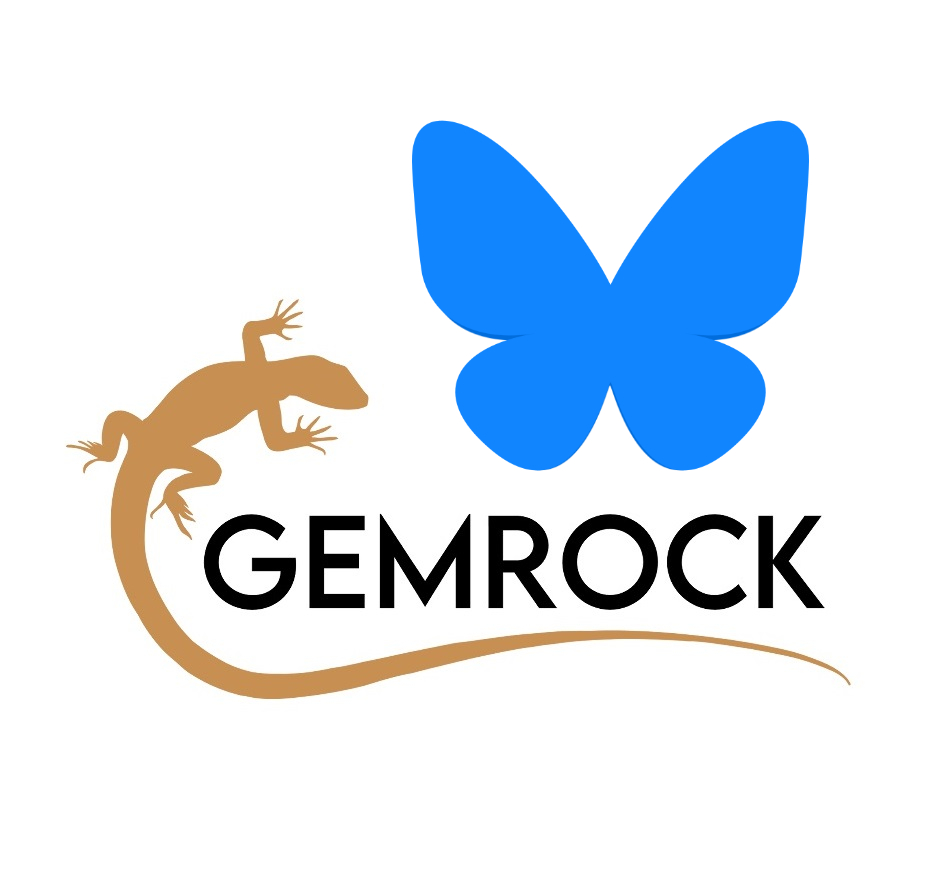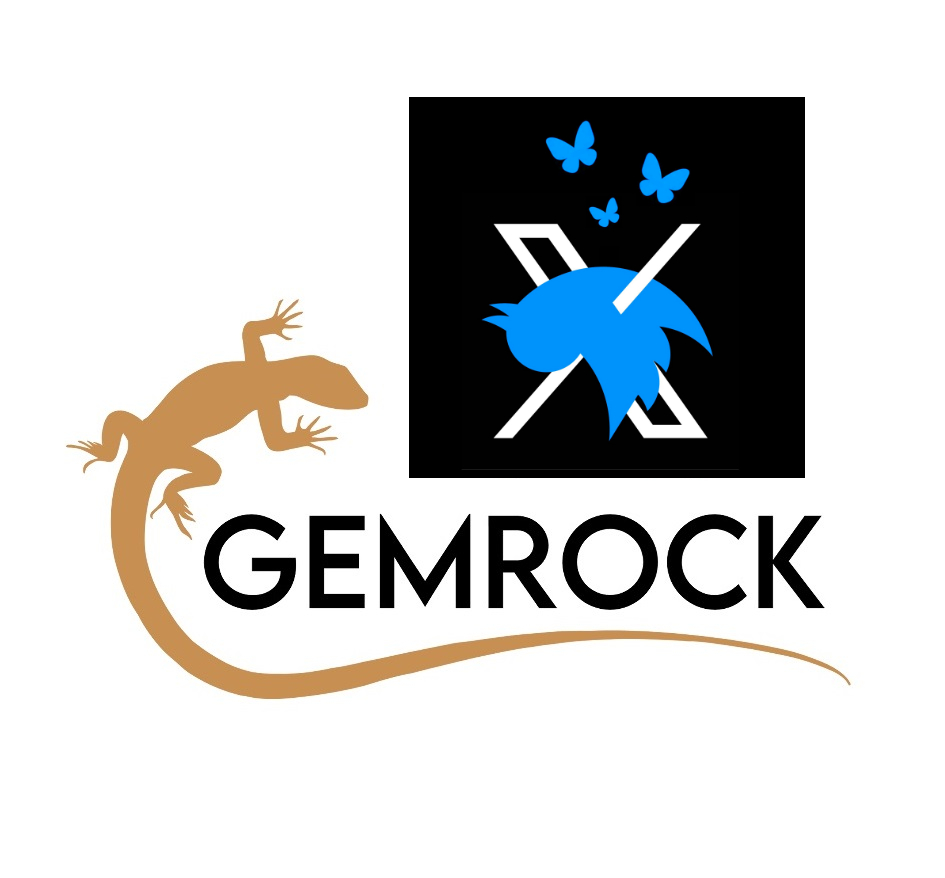Angelite
Gemstone Quality Standard
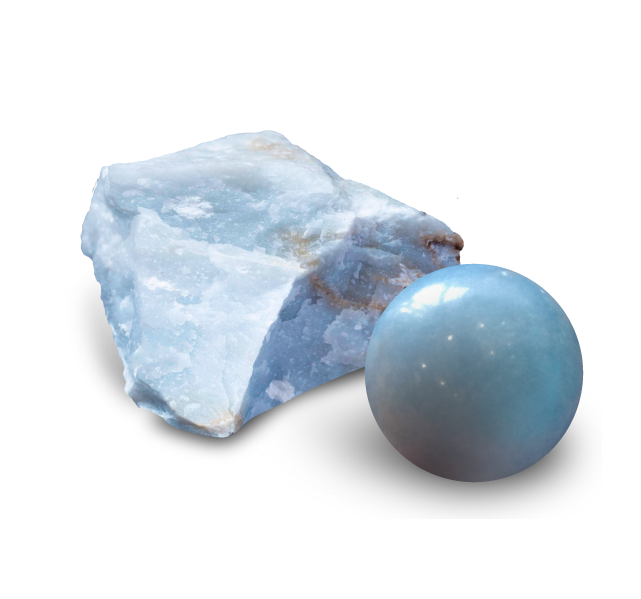
About Angelite
Angelite, also known as angel stone, is a glacier-blue or lilac-blue-colored very soft stone. Its hardness on the Mohs Scale is 3.5.
It is an Anhydrite (CaSo4 – Hydrated Calcium Sulfate). Its name comes from the Greek anhydras (“without water”), which is a reference to Angelite being gypsum that has completely lost all water.
Angelite was originally discovered in 1794. However, it was the Angelite discovery in 1987 in Peru, which started its use for jewelry and as a popular new-age gemstone.
Angelite does not occur in veins but in nodes that are usually fist-sized or slightly bigger.


Rarity
Even though it occurs in Europe, Lybia, Egypt, and Mexico, the largest deposits are in Peru. It is not a rare stone.
Availability
We sell Angelite as Rough rock, as preselected slabs for cabochon cutting, as decor products, as cabochons, and in our jewelry.


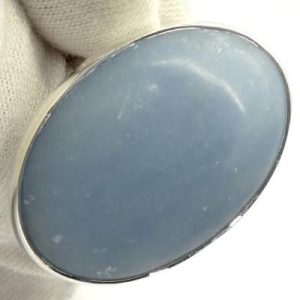
Unsuitable color for jewelry: pale blue cheap angelite rough. Additionally: too many white gypsum flecks and bad surface polish.
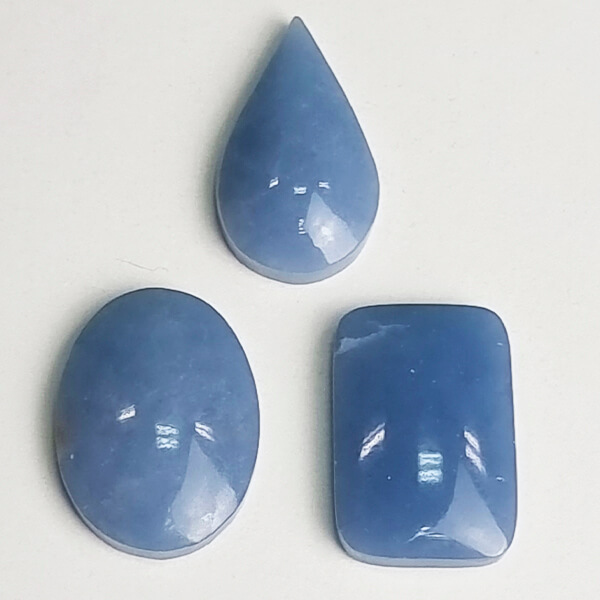
Jewelry-grade material: Intense sky blue uniform coloration without gypsum flecks and glass-like polish on Gemrock cabs
Color
Angelite is a glacier-blue or lilac-blue-colored stone.
Color intensity:
In the Angelite mines, one can buy a whitish, pale blue version of Angelite at a cheaper price. This pale material is not adequate for jewelry. Jewelry-grade Angelite displays a more intense blue and can be acquired from mines at a higher price.
Uniformity of color:
Angelite generally displays a uniform coloration with very few color shades.


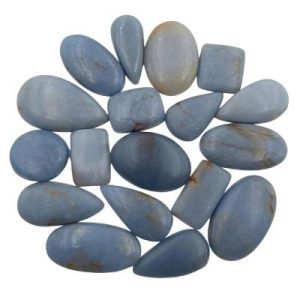
Unsuitable material for jewelry: pale blue colors, brownish/yellowish coloration, dark brown impurities (additionally: low-quality polish).
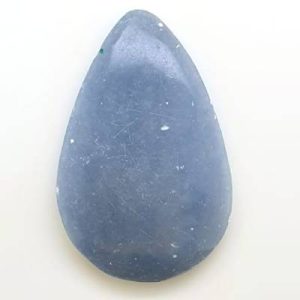
Unsuitable material for jewelry: Too many white gypsum flecks.
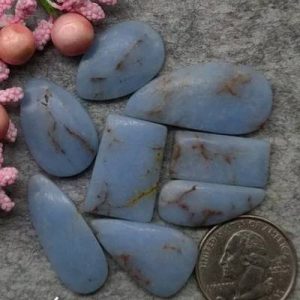
Unsuitable material for jewelry: dark brown impurities (additionally: low quality polish).
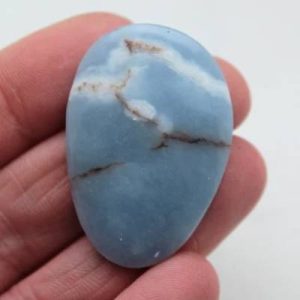
Worst cab ever: dark brown impurities along cracks mixed with thick white gypsum lines. Irregular cab made out of waste material. Sold as “Free Form” for 30 USD.
Impurities
Angelite shows white and brown impurities. White impurities are gypsum. Gypsum impurities appear as tiny white flecks or as massive lines of gypsum penetrating the stone along microcracks in the material. Most likely those cracks opened the way for water to penetrate the stone, which hydrated the cracks and initiated the Angelites’ deterioration into gypsum along those cracks.
The reddish-brown impurities penetrate a great part of the Angelite volume in a similar pattern to the gypsum lines.
Gypsum lines and brownish impurities render more than 75 % of the Angelite unsuitable for jewelry.
Angelite with just a few tiny white gypsum flecks may be used for economy jewelry at a lower price level. However, less than 20 percent of the Angelite rough rock material acquired in the mine is free of impurities and suitable for top-quality jewelry.
In order to obtain this material the nodes must be cut open and all unsuitable material must be cut away. In order to obtain 1 kilo of jewelry-grade material we are buying 5 kilos of rough rock and discard 4 kilos on average.



Polishable
When polishing Angelite Gemrock cutters do NOT follow the regular steps of increasingly finer diamond wheels from 600 to 3000 grit. Maximum polish can be obtained by polishing to 1200 grit and then adding a different polishing method, developed by us, which makes a by far superior polished surface pop out.
You can buy our finished top-quality cabochons for jewelry makers.
National and international shipping from our US-based warehouse.


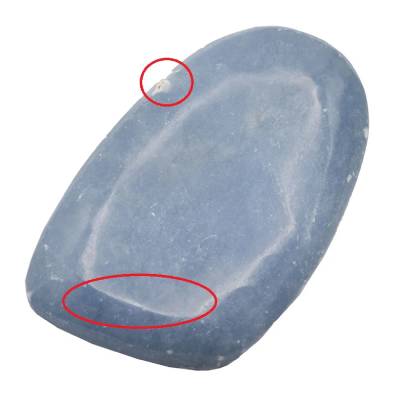
Super-low cutting quality: irregular chipped borders, rounded edge without a bezel. Light reflection unvails an irregularly shaped dome with a flattened central area, and finally super low surface polish.
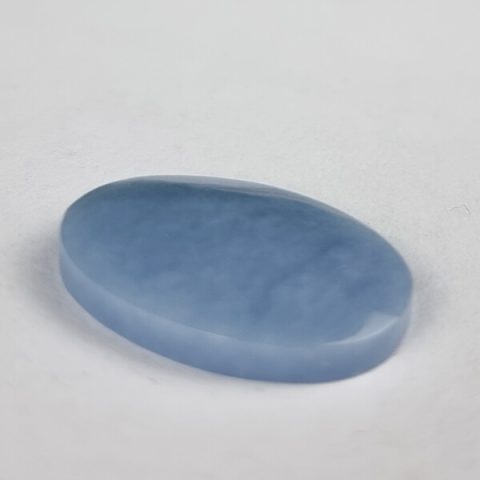
Gemrock cutting standard: straight bezel with sharp and crispy edges. No chipped edges. Very exact oval shape. flawless round dome, made from premium jewelry grade material without a single gyspum fleck, color shade, crack or brown impurity.
Cutting Quality
Challenges:
Angelite is a very soft material. Cutting it requires the application of very little pressure against the shaping and polishing wheels. Cutting small cabs from this soft material becomes more difficult the smaller the required cab is. Inexperienced cutters will most likely deform the cab.
Advantages:
Angelite does not tend to break or chip. Experienced cutters therefore can obtain very sharp unchipped edges between the backside and bezel as well as between the bezel and dome.
Top-cutting-quality is characterized by:
- a polished backside
- a sharp unchipped edge between the backside and the bezel
- a very straight and even highly polished bezel
- a sharp unchipped edge between the bezel and the dome
- a well-shaped dome, not showing any deformation
- Top-quality polish


Be aware of wrongfull quality grading
It’s commonplace in the crystal industry to cut cheap cabochons from any kind of Angelite without applying any kind of grading for high-quality material. Frequently you can find cabochons made from completely unsuitable material full of brown and white impurities. Unscrupulous dealers take advantage of the lack of knowledge of crystal shops, jewelers, and final clients and market such low-grade and even trashy material as Tripple A top-grade material.


Pricing
Adequate pricing must take into account the cost factors to obtain top-quality cabochons:
- Acquisition of top-grade Angelite with strong color in the mine.
- Selection of material without impurities and discarding more than 80 percent of the rough rock as unsuitable for jewelry.
- A usual material loss of approximately 90 % of the selected material during the cutting and shaping process.
- The level of experience required by a cutter to produce a flawlessly shaped and highly polished cabochon from such a soft material.
You can buy our finished top-quality cabochons for jewelry makers.
National and international shipping from our US-based warehouse.
- Market research
- Our Jewelry Grade (A)
- Our Top-Quality Jewelry Grade (AA)
- Our Premium Jewelry Grade (AAA)
The data in this sheet has been compiled by reviewing a great number of websites and sales platforms.
Material quality:
We can find all kinds of material qualities being used for cabochons without any objective grading being applied. Approximately one-third of cabochons seen on offer are made from material that we consider unsuitable for jewelry production.
Cutting quality:
The vast majority of “cabochons” on offer show very low cutting quality. In extreme cases, shapes are completely irregular and such “cabochons” are then sold as “free-forms”, using the term wrongfully to mislead the uninformed client. Very frequently cabochons are cut with rounded corners (similar to a palmstone) which do not show any bezel. We estimate that no more than 10 % of the cabochons that are on offer show a decent level of cutting quality and maybe half of those look excellent. In other words: 90% of offered cabochons would need to be graded below the Gemrock Jewelry Grade (A)
Quality Grading
Most cabochons were offered as AA or AAA quality, which obviously does not represent the reality. Given the fact that there is no commonly accepted grading standard AA and AAA gradings are used as a marketing strategy without reflecting a real criteria of quality. This type of marketing must be viewed as misleading.
Pricing
The average pricing for Angelite cabochons is 41 cents per carat (with a range from 14 cents per carat to 84 cents per carat).
We could not find a correlation between cutting quality or material quality and pricing. A higher price does not indicate a higher quality.
While the low cutting and material quality maybe could be justified for pricing levels at 14 cents per carat, the same low quality also could be found for sales prices above 30 cents per carat.
Jewelry Grade Material:
Strong sky blue (we do not use pale blue material). A few tiny white gypsum flecks, internal crack lines, and tiny shades of brown impurities are allowed. White gypsum lines and strong brown impurities are not accepted.
Cutting Quality:
- Straight bezel (minor irregularities possible), 3 mm high
- Perfect dome (3-5 mm high)
- Edges between bezel and dome, as well as bezel and backside: sharp and crispy, minor chips on lower edge possible
- Backside flat at 280 grit, unpolished
Pricing:
Recommended Retail Price: 39 cents per carat
Jewelry Grade Material:
Strong sky blue color. A few tiny gypsum flecks may occur but should be located at the borders of the cab.
Cutting Quality:
- Straight bezel, 3 mm high
- Flat and perfect dome (3 mm high)
- Edges between bezel and dome, as well as bezel and backside: sharp and crispy, minor chips on lower edge possible but very rare.
- Backside flat, at 280 grit
Additionally (AA+): Backside polished to 3000 grit
Pricing:
Recommended Retail Price (AA): 69 cents per carat
AA+: 79 cents/c
Top-Jewelry Grade Material:
Strong sky blue, no impurities
Cutting Quality:
- Cut by our best cutters.
- Straight bezel, 3 mm high
- Flat and perfect dome (1-3 mm high)
- The edges between the bezel and dome, as well as the bezel and backside, are sharp and crispy, with no chips on the lower edge.
Additional Quality (AAA+): Backside polished to 3000 grit
Pricing:
Recommended Retail Price (AAA): 0.99 USD per carat
AAA+: 1.09 USD/c
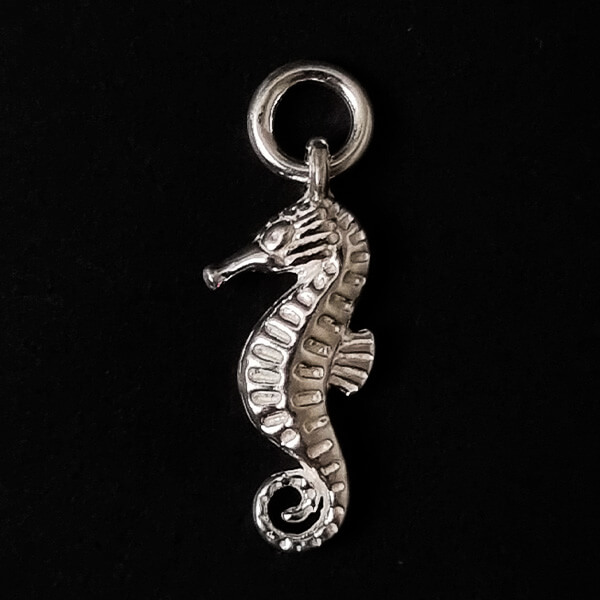
For Charms & Pendants
Ethical Silver Accessories
for Jewelry Makers
Hundreds of charms, pendants & chains
in
950 Silver, Sterling Silver, tarnish-resistant Moonlight Sterling Silver, gold-plated silver and gold.
Guaranteed Free of toxic alloys.
How to avoid fake & toxic silver:
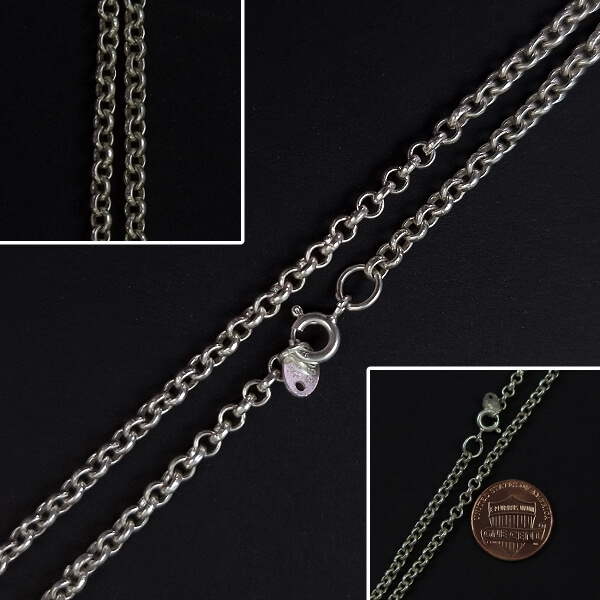
For Chains
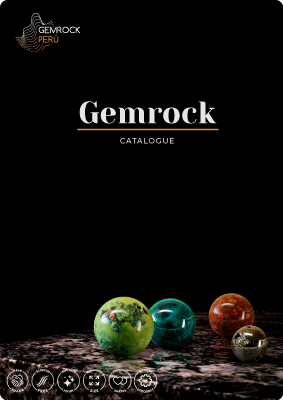
Shop your crystals & jewelry NOW
NATURA MINERA
Achetez vos cristaux Gemrock, produits en cristal et bijoux à Québec
GEMROCK CANADA
Online retail shop of ethical, top-quality crystal specimens, jewelry, and jewelry-maker accessories like cabochons, silver chains, silver wire, and charms. Exports to USA.
Gemrock Peru - Tienda
Venta de cristales naturales, piedras talladas y joyería de Gemrock en Peru a nivel nacional.
Free Gemrock Learning Resources
Free Gemrock Learning Resources
Connect wherever you want and can
Connect wherever you want and can
Cutting services
Do you need reliable high-quality cutting services for a reasonable price? Are you looking for a service provider that is willing to develop new products according to your requirements? Would you like to get expert advice in order to improve your product? Do you wish for someone to optimize the process and get the most out of your rough? Just talk to us.
Get in Touch
+51 994104206
gemrockinternational@gmail.com
